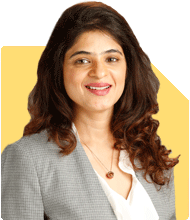Balancing IVF Debt and New Baby Expenses: Where Do We Start?
Ramalingam Kalirajan |8457 Answers |Ask -Follow
Mutual Funds, Financial Planning Expert - Answered on Apr 16, 2025
He has an MBA in finance from the University of Madras and is a certified financial planner.
He is the director and chief financial planner at Holistic Investment, a Chennai-based firm that offers financial planning and wealth management advice.... more

We took a loan to cover IVF - it worked, and we have a beautiful baby. But now the expenses have doubled, and we still have 3 lakhs to repay. Diapers, baby care, doctor visits - it's chaos. Do we focus on paying off debt or just survive the baby phase first?
Also, hats off to you both for getting through the IVF phase. Emotionally and financially, that’s not easy.
Let’s now help you tackle this new phase — parenting with a loan and rising expenses — through a clear, structured, and emotionally balanced financial plan.
When You’re Juggling a Baby and a Loan
This phase is chaotic for everyone. You are not doing anything wrong.
Newborns bring joy, love, and higher expenses.
Your Rs 3 lakh loan feels heavier now, but it helped you achieve parenthood.
So don't treat it as a burden. Treat it as an investment with emotional returns.
That said, your next steps must be emotionally calm and financially clear.
First Priority: Emergency Cushion for Baby Phase
Before anything else, make sure you don’t borrow again.
That means:
Keep Rs 30,000 to Rs 50,000 untouched in your savings account.
This is not an investment. This is your “baby survival buffer”.
It is for emergency doctor visits, medicines, or unexpected spends.
Without this, any sudden cost will push you into another loan or card debt.
Only after this buffer is ready, should you accelerate loan repayment.
How to Treat the Rs 3 Lakh IVF Loan
This loan has already given you value: your child.
So now, you handle it strategically:
Don’t panic. Don’t rush to close it too soon if it hurts your monthly flow.
But don’t delay beyond reason either. Emotional loans become financial chains if stretched.
So your goal: finish this loan within 12 to 15 months, without stress.
Set an auto EMI, then add small top-ups every month if you have surplus.
Example: Rs 1,000 extra here, Rs 2,000 extra there. These reduce interest quietly.
Real Expenses Now: Where Can You Adjust?
Baby expenses feel like they doubled everything. But many are flexible.
Let’s break it down:
Diapers – bulk buying or shifting to cloth part-time saves Rs 800–1000/month.
Medicines – ask paediatrician for generics where safe. Big cost saver.
Baby gear – buy second-hand or take from family friends. Babies outgrow fast.
Feeding bottles, toys, clothes – don’t fall for Instagram guilt. Buy what you need.
Maid, cooking help – if you’re spending here, treat it as recovery support. It’s okay.
Your focus should be: reduce wasteful spends, not essential care.
Should You Pay Loan First or Just Survive?
Here’s the Certified Financial Planner answer, in Indian language:
First 6 months: Just survive. Build that Rs 30K–50K buffer.
Then slowly: move to a balanced path. 70% focus on baby. 30% on debt.
By month 7 or 8: Shift to 50-50. That means both debt and baby costs get equal attention.
After 12 months: Prioritise closing debt fully. Start saving for child’s future.
The Emotional Cost of Debt During Parenting
This is real. Many parents feel shame or fear about loans during baby years.
Please don’t.
You did the right thing for your family.
A Rs 3 lakh loan is not failure. It is love in advance.
What matters now is a plan to get stronger every month.
What You Can Start Right Away
Here’s your action checklist, simple and doable:
Keep Rs 30K–50K untouched for emergencies.
Automate the loan EMI. Add Rs 1000–2000 as top-up when possible.
Track your top 5 baby-related monthly spends. See what can reduce 10% without stress.
Review UPI and lifestyle spends monthly. Shift any leftover to an RD.
After 12 months: Plan a SIP of Rs 1,000 for your child’s future.
Final Insights
You are not stuck. You are in a transition.
This is a high-expense year. But it’s also a foundation year.
You built a family. That’s the biggest wealth.
You took a loan. That was wise and courageous.
You are asking these questions now. That shows you’re ready for financial clarity.
So don’t panic. You don’t need to choose baby care or debt.
You can choose a middle path for 12 months.
That’s all it takes to regain full control — and start saving with confidence again.
Best Regards,
K. Ramalingam, MBA, CFP,
Chief Financial Planner,
www.holisticinvestment.in
https://www.youtube.com/@HolisticInvestment
You may like to see similar questions and answers below
Ramalingam Kalirajan |8457 Answers |Ask -Follow
Mutual Funds, Financial Planning Expert - Answered on Jun 28, 2024
Ramalingam Kalirajan |8457 Answers |Ask -Follow
Mutual Funds, Financial Planning Expert - Answered on Jul 10, 2024
Kanchan Rai |586 Answers |Ask -Follow
Relationships Expert, Mind Coach - Answered on Nov 28, 2024
Milind Vadjikar |1236 Answers |Ask -Follow
Insurance, Stocks, MF, PF Expert - Answered on May 16, 2025
Milind Vadjikar |1236 Answers |Ask -Follow
Insurance, Stocks, MF, PF Expert - Answered on May 16, 2025
Ravi Mittal |589 Answers |Ask -Follow
Dating, Relationships Expert - Answered on May 16, 2025
Ravi Mittal |589 Answers |Ask -Follow
Dating, Relationships Expert - Answered on May 16, 2025
Jinal Mehta |99 Answers |Ask -Follow
Financial Planner - Answered on May 16, 2025
Ashwini Dasgupta |106 Answers |Ask -Follow
Personality Development Expert, Career Coach - Answered on May 16, 2025
Ramalingam Kalirajan |8457 Answers |Ask -Follow
Mutual Funds, Financial Planning Expert - Answered on May 16, 2025
Ramalingam Kalirajan |8457 Answers |Ask -Follow
Mutual Funds, Financial Planning Expert - Answered on May 16, 2025
Ramalingam Kalirajan |8457 Answers |Ask -Follow
Mutual Funds, Financial Planning Expert - Answered on May 16, 2025
Ramalingam Kalirajan |8457 Answers |Ask -Follow
Mutual Funds, Financial Planning Expert - Answered on May 16, 2025


























